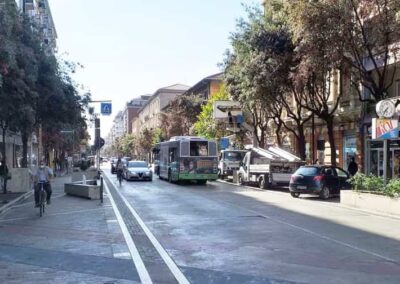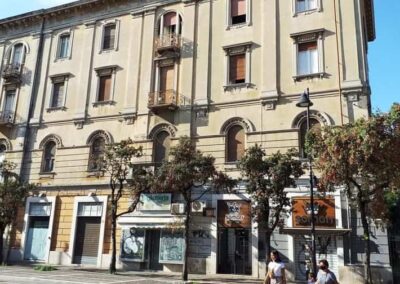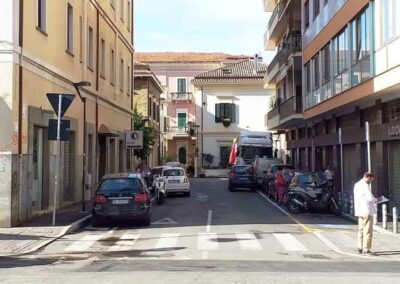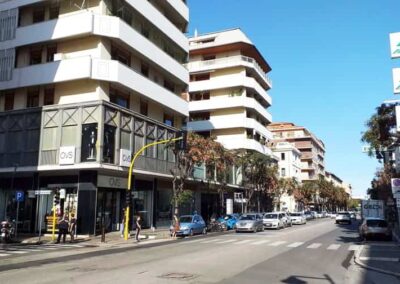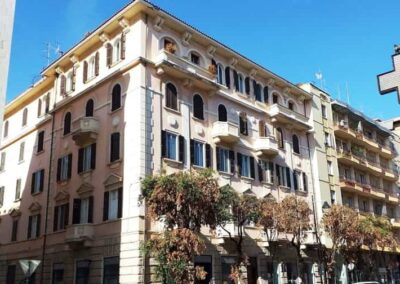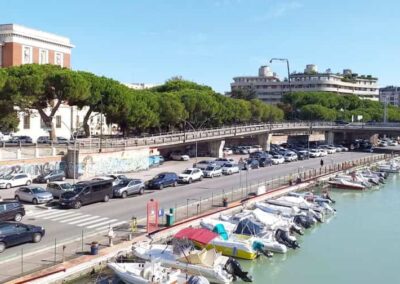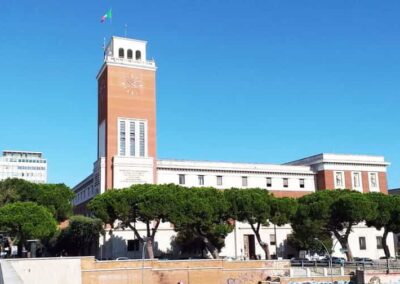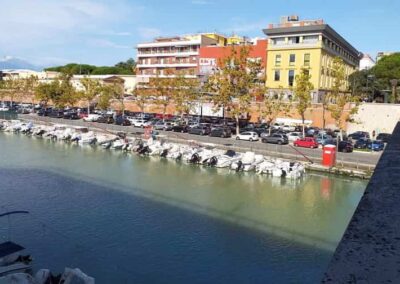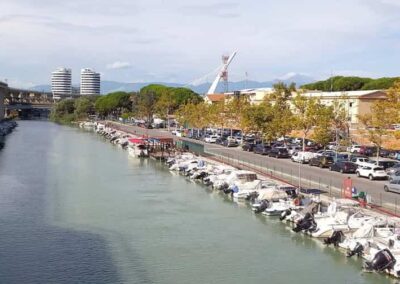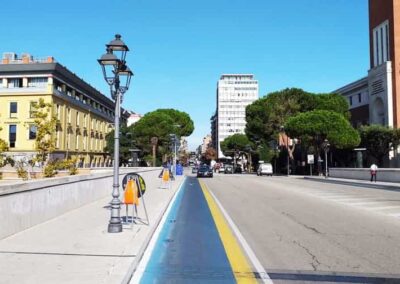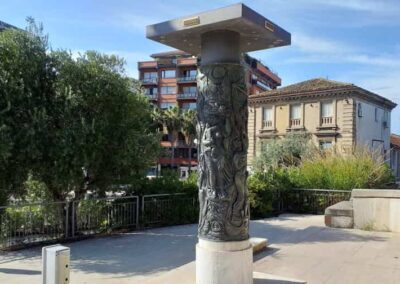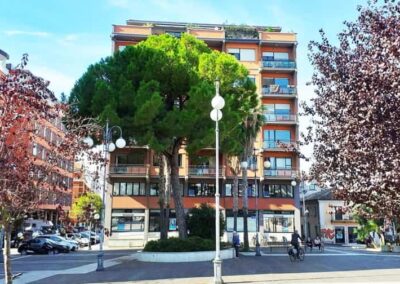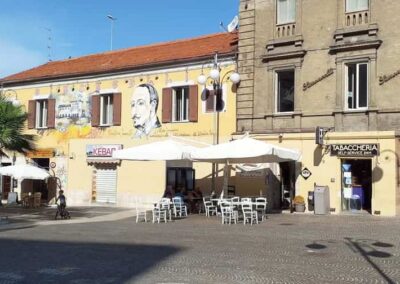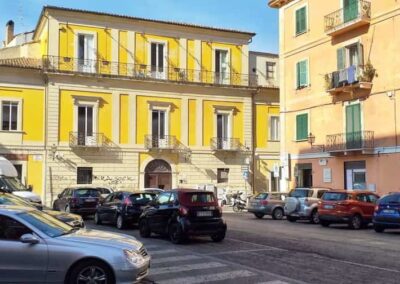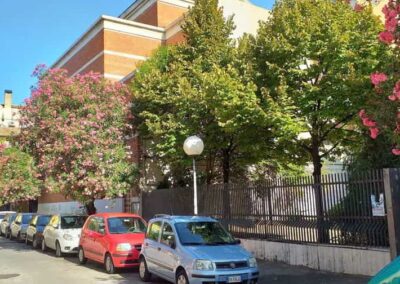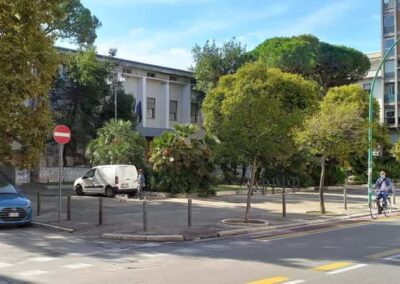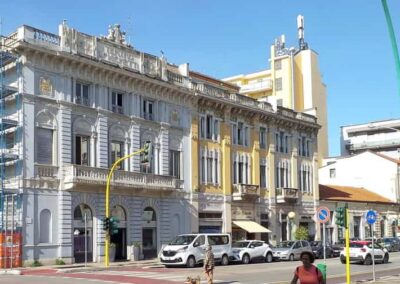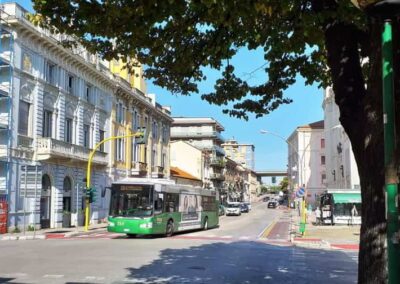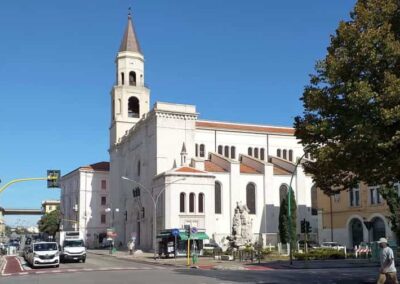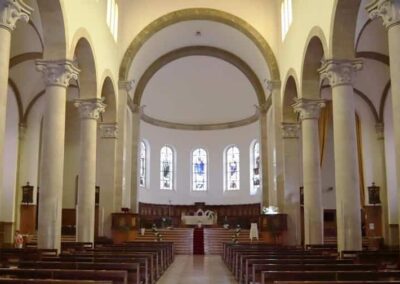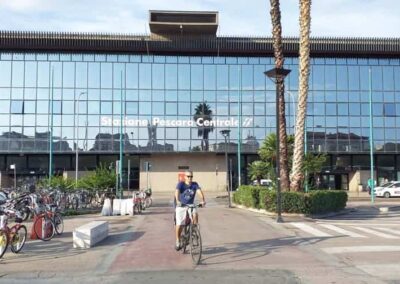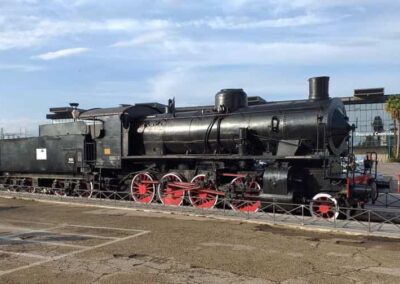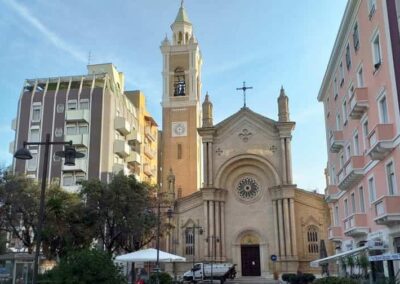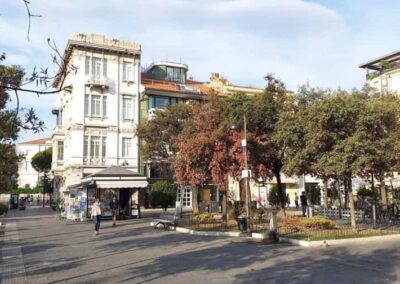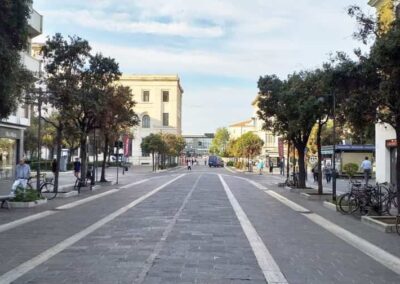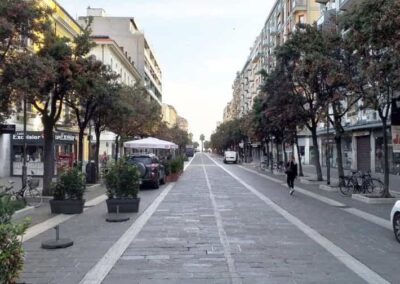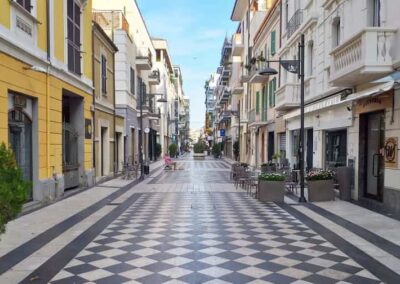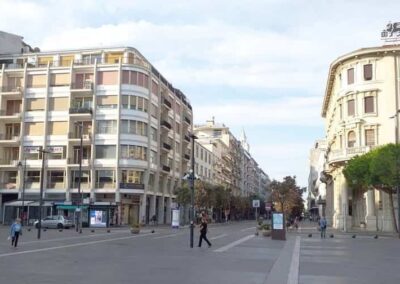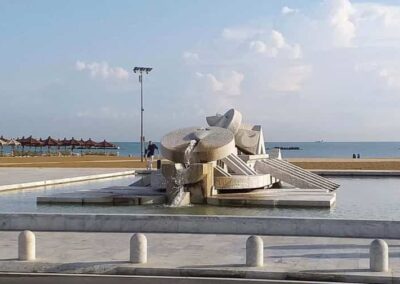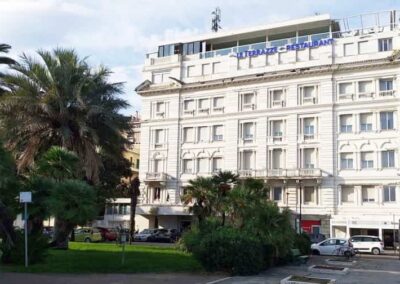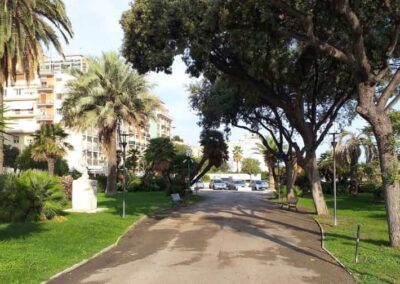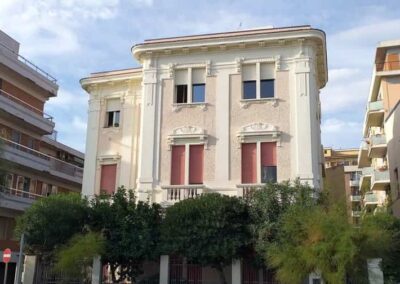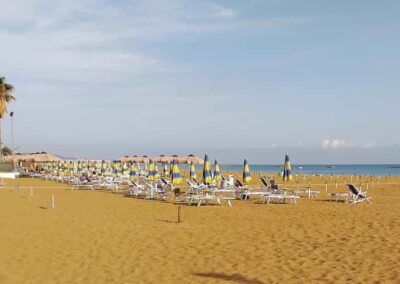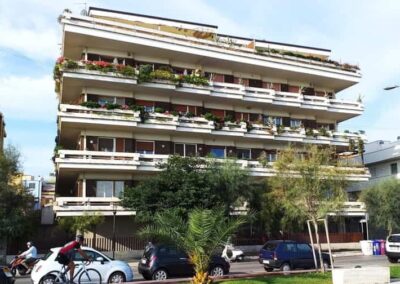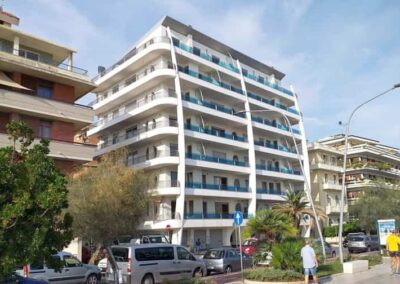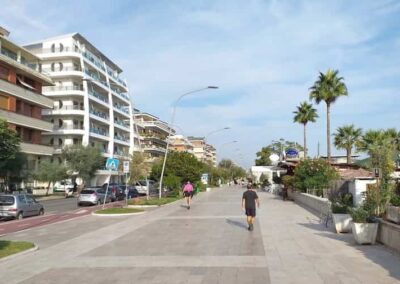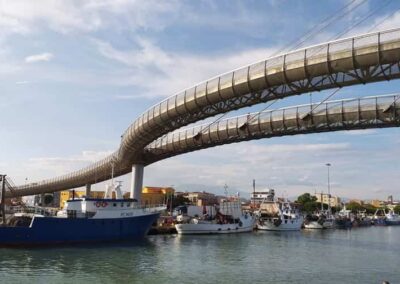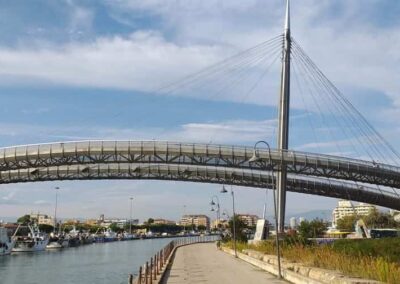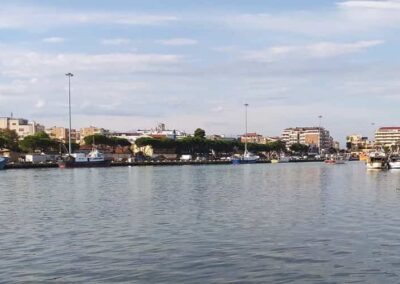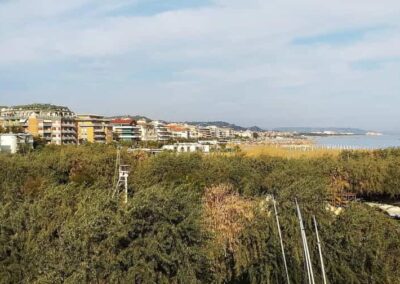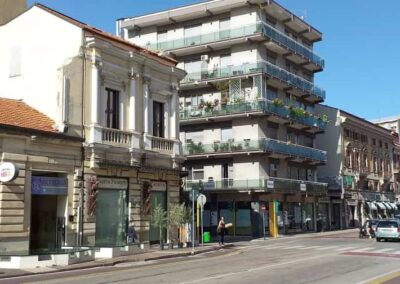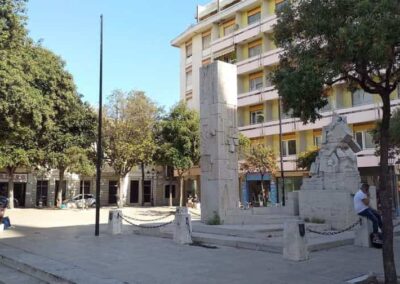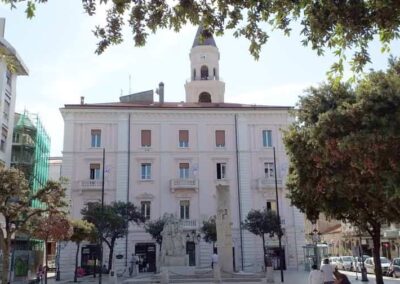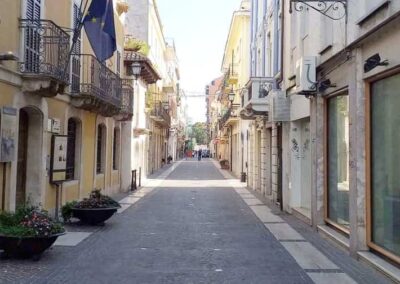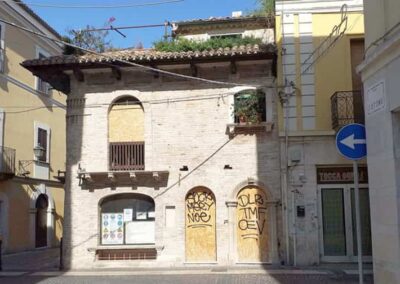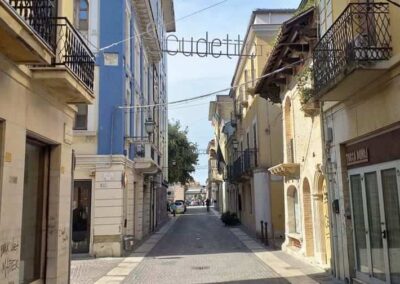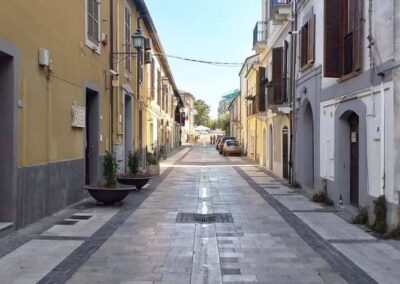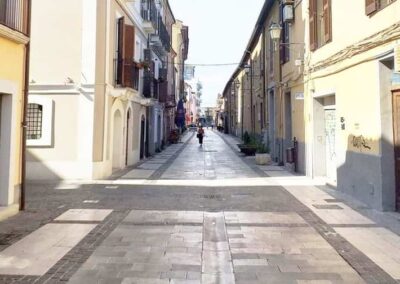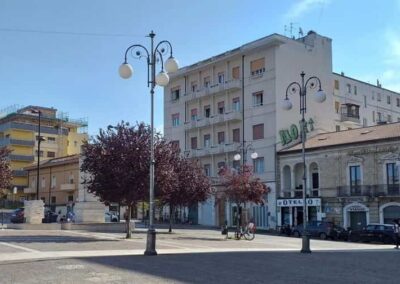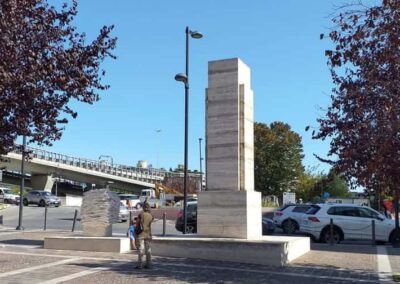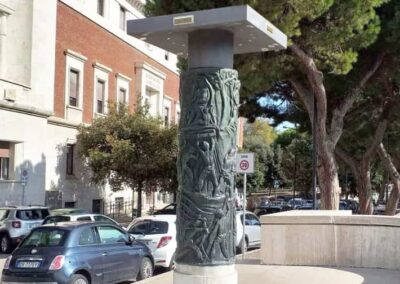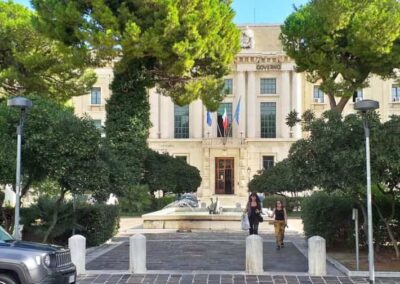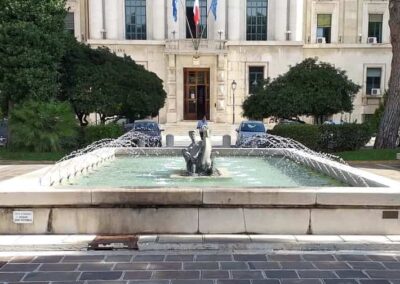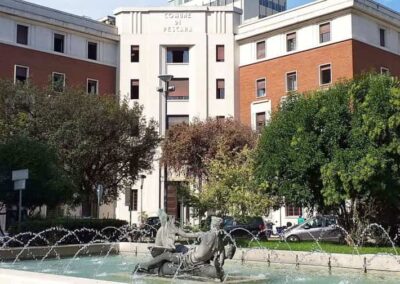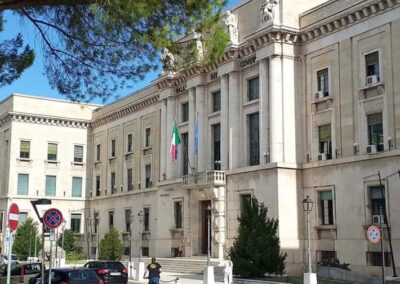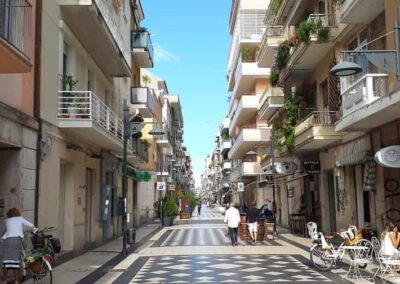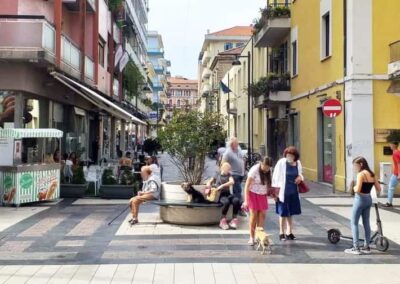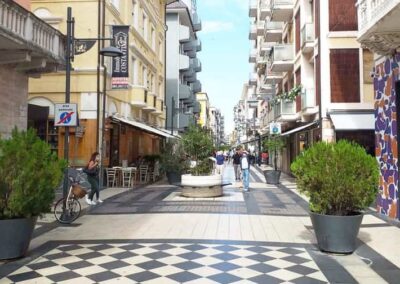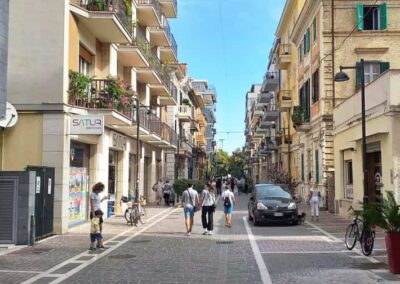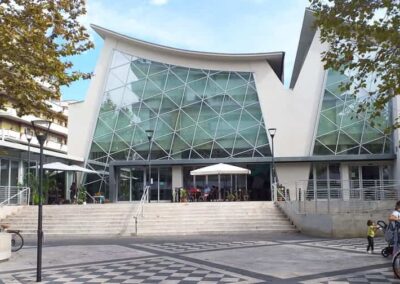HOME
THE REGIONS OF ITALY
PLACES IN ITALY
Italy in Photos
Ponte Risorgimento, 65122 Pescara PE (September 2020)
Pescara
Pescara, a lively and dynamic city located on Italy’s Adriatic coast, is a place where natural beauty, history, and modernity converge. As the largest city in the Abruzzo region, Pescara serves as a vital economic, cultural, and transportation hub. Known for its stunning beaches, rich historical background, and vibrant urban life, Pescara attracts visitors from across Italy and beyond, offering a unique blend of experiences that cater to a variety of interests. Pescara’s strategic location along the Adriatic Sea has been central to its development over the centuries. The city is divided by the Pescara River, which flows from the Apennine Mountains and empties into the Adriatic. This natural feature has played a significant role in the city’s history, serving as a natural boundary and a resource that facilitated trade and transportation. The history of Pescara dates to ancient times when it was known as Aternum, a significant port during the Roman era. Aternum was a key trading centre, linking Rome to the eastern Mediterranean via the Adriatic. The remains of the ancient Roman settlement, including parts of a bridge and roads, can still be seen in the area, serving as a testament to Pescara’s long and storied past. Throughout the Middle Ages, Pescara was contested by various powers due to its strategic location. It was part of the Kingdom of Sicily and later the Kingdom of Naples, and during these periods, the city experienced both growth and conflict. The modern city of Pescara, however, only began to take shape in the 19th century, following the unification of Italy, when it became an important military and industrial centre.
Today, Pescara is a bustling urban centre with a population of over 120,000 residents. The city is characterized by its modern architecture, wide boulevards, and a vibrant cultural scene. Pescara’s economy is diverse, with strong sectors in tourism, commerce, industry, and services. The city’s port remains a key asset, serving as a gateway for trade and travel to and from the Adriatic and beyond. One of Pescara’s most significant modern developments is its role as a transportation hub. The city is home to the Pescara Centrale train station, which connects it to major cities such as Rome, Milan, and Bologna. Additionally, Pescara has an international airport, Abruzzo Airport, which provides access to various European destinations. This connectivity has made Pescara a convenient destination for both business and leisure travellers. Pescara has a rich cultural life, with numerous museums, galleries, and theatres that celebrate its artistic heritage. One of the city’s most famous sons is the poet Gabriele D’Annu
The city also hosts various cultural events throughout the year, including the Pescara Jazz Festival, one of the oldest and most prestigious jazz festivals in Italy. This event attracts renowned musicians from around the world and adds to Pescara’s reputation as a vibrant cultural centre. Pescara is renowned for its beautiful coastline, which stretches for several kilometres along the Adriatic Sea. The city’s beaches are some of the best in Italy, featuring soft golden sands and clear blue waters. These beaches are a major draw for tourists, particularly during the summer months when the city comes alive with beachgoers, festivals, and nightlife. The Lungomare, Pescara’s seafront promenade, is a popular spot for walking, cycling, and enjoying the sea breeze. Lined with palm trees, cafes, and restaurants, the Lungomare offers stunning views of the Adriatic and is a central part of the city’s social life. Beyond the beaches, Pescara is surrounded by natural beauty. The nearby Apennine Mountains offer opportunities for hiking, skiing, and exploring Italy’s rugged interior. The region is also home to several national parks, including the Majella National Park, known for its diverse flora and fauna.
Pescara is a city of contrasts, where the old meets the new, and the natural world blends seamlessly with urban life. Its historical roots as an ancient port and its modern status as a thriving city create a unique atmosphere that is both welcoming and dynamic. Whether you’re interested in history, culture, or simply relaxing by the sea, Pescara offers something for everyone. Pescara is not just a gateway to the Adriatic, but a destination in its own right. With its rich history, vibrant culture, and stunning natural surroundings, Pescara invites visitors to explore its many facets and discover the unique charm of this coastal city. Whether strolling through its modern streets, enjoying its beaches, or delving into its past, Pescara offers a diverse and enriching experience that captures the essence of Italy’s Adriatic coast.
Worth a Visit
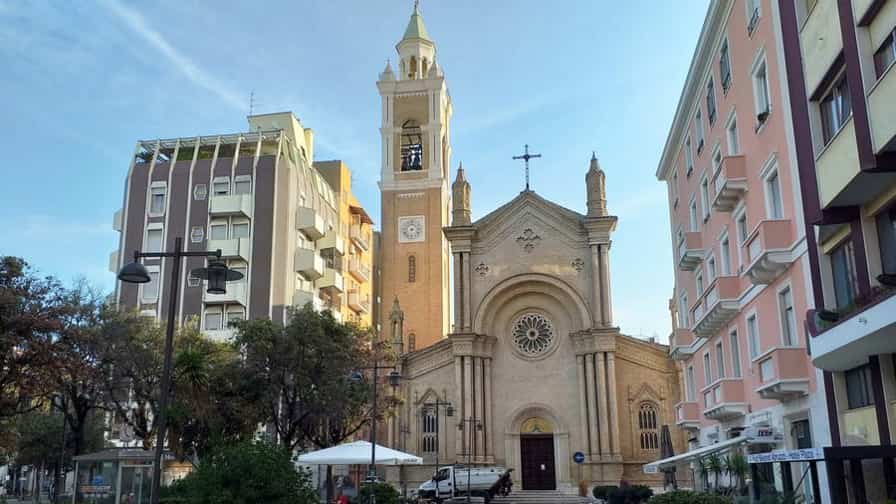
Piazza del Sacro Cuore is one of the most central and lively squares in Pescara, located in the heart of the modern city. The square takes its name from the Church of the Sacred Heart, a prominent neoclassical-style church that stands as its main landmark. Surrounded by shops, cafés, and bustling streets, Piazza del Sacro Cuore is both a spiritual and social hub for residents and visitors alike. It lies close to Corso Umberto I, one of Pescara’s main shopping avenues, and serves as a natural meeting point within the city. The square often hosts cultural events, street performances, and festive gatherings, reflecting the vibrant atmosphere of Pescara. Its combination of religious significance, commercial activity, and everyday life makes Piazza del Sacro Cuore a symbolic place where tradition and modernity meet, offering a welcoming space to pause, explore, and enjoy the rhythm of the city.
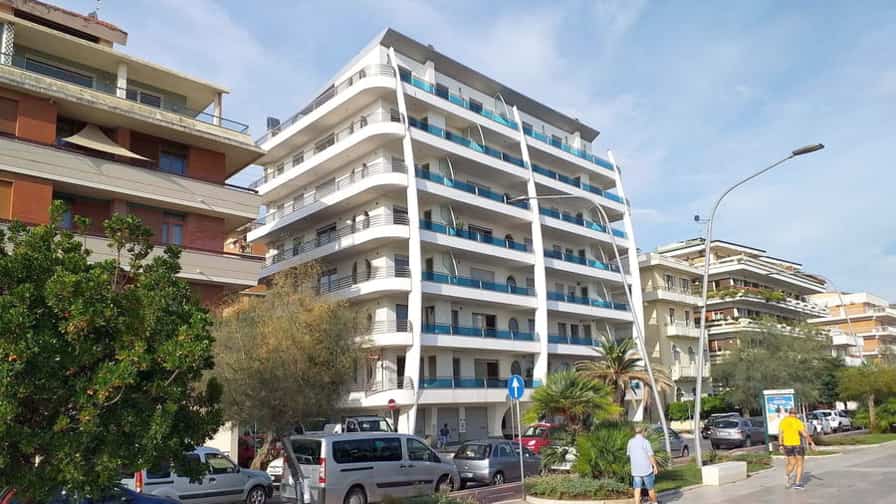
Lungomare G. Matteotti is one of the most famous seaside promenades in Pescara, stretching along the Adriatic coast and offering stunning views of the sea. Lined with palm trees, sandy beaches, and lively beach clubs, it is a favorite destination for both locals and visitors who enjoy walking, cycling, or relaxing by the waterfront. The promenade is well known for its vibrant atmosphere, especially in the summer months, when restaurants, cafés, and gelaterias come alive with activity. By day, Lungomare G. Matteotti is perfect for sunbathing and water sports, while in the evening it transforms into a lively social spot with nightlife and cultural events. Its wide pedestrian areas, bike paths, and proximity to the city centre make it easily accessible and enjoyable year-round. More than just a seaside walk, Lungomare G. Matteotti captures the essence of Pescara’s coastal lifestyle.
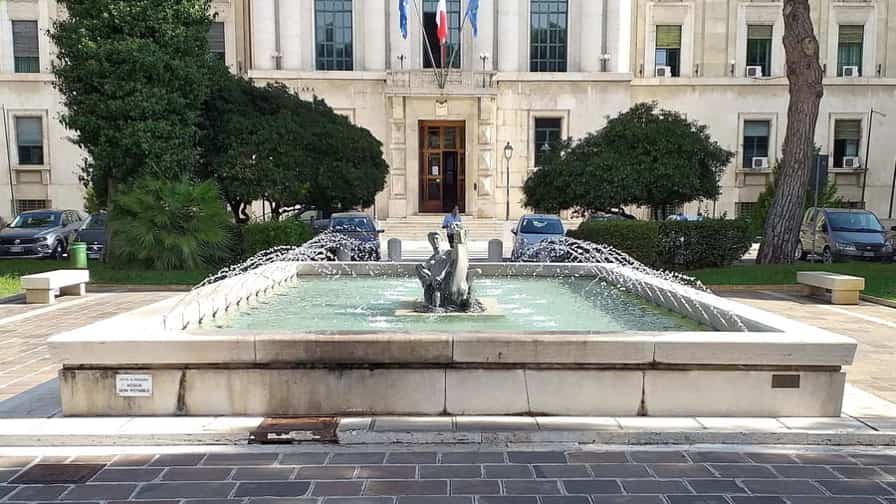
Piazza Italia is the institutional and political heart of Pescara, located between the city center and the riverside. Surrounded by important government buildings, including the Town Hall and the Prefecture Palace, the square represents the civic core of the city. Its spacious design, elegant fountains, and well-kept green areas make it a pleasant place to walk, rest, or meet friends, while also highlighting its role as a symbol of local identity. Piazza Italia often hosts official ceremonies, cultural events, and public gatherings, reflecting its importance in the social and administrative life of Pescara. Its central location makes it a natural crossroads between the commercial areas of Corso Umberto I and the waterfront, offering visitors a chance to experience both the institutional and leisure sides of the city. With its mix of history, architecture, and daily life, Piazza Italia remains one of Pescara’s most significant landmarks
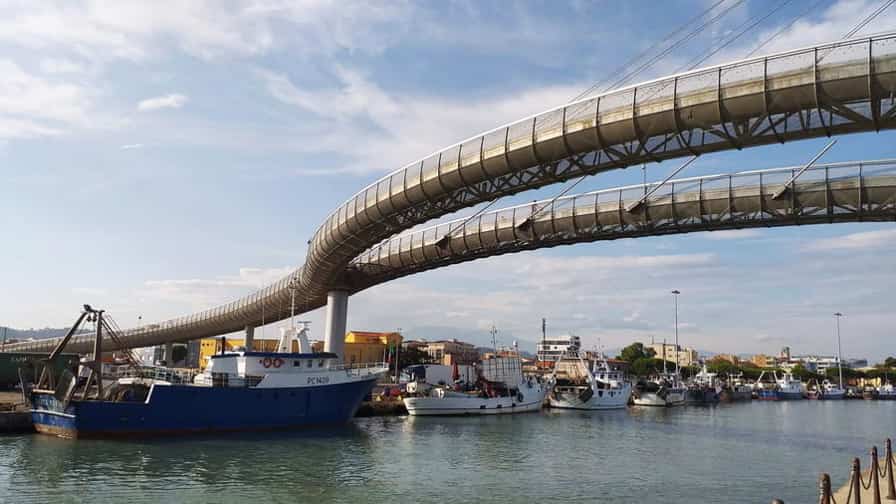
Ponte del Mare is one of Pescara’s most iconic landmarks and a striking symbol of the city’s modern identity. Opened in 2009, this impressive pedestrian and cycling bridge spans the mouth of the Pescara River, connecting the northern and southern parts of the city’s seafront. With its elegant, sail-like design and sweeping curves, Ponte del Mare is not only an architectural masterpiece but also an experience in itself. From its highest point, visitors can enjoy breath-taking panoramic views of the Adriatic Sea, the sandy coastline, the city skyline, and, on clear days, even the distant peaks of the Apennines. The bridge has quickly become a favourite spot for leisurely walks, bike rides, and romantic sunsets, as well as a key venue for cultural events and city celebrations. More than just a crossing, Ponte del Mare represents the vibrant spirit of Pescara, where innovation, nature, and daily life come together.
Photo Gallery of Walk 1 – Corso Vittorio Emanuele II to Cattedrale di San Cetteo, Piazza San Cetteo
Approximately 1.47 km – 0.91 miles
The walk starts in Vittorio Emanuele II – Piazza Duca D’Aosta – Ponte Risorgimento – Piazza Unione – L.go dei Frentani – Via Angiolieri Cecco – Via Conte di Ruvo – Viale Gabriele D’Annunzio – Cattedrale di San Cetteo, Piazza San Cetteo
Photo Gallery of Walk 2 – Piazza della Repubblica to Ponte del Mare, Lungomare Colombo
Approximately 2.35 km – 1.46 miles
The walk starts in Piazza della Repubblica – Corso Umberto I – Piazza del Sacro Cuore – Corso Umberto I – Via C. Battisti – Corso Umberto I – Piazza della Rinascita – Corso Umberto I – Piazza I Maggio – Lungomare G. Matteotti – Lungomare Colombo – Ponte del Mare, Lungomare Colombo
Photo Gallery of Walk 3 – Viale Gabriele D’Annunzio to Via C. Battisti
Approximately 1.92 km – 1.19 miles
The walk starts in Viale Gabriele D’Annunzio – Piazza Giuseppe Garibaldi – Via Lago di Scanno – Via Catone – Via delle Caserme – Ponte Risorgimento – Piazza Duca D’Aosta – Piazza Italia – Via Calabria – Via Firenze – Via Roma – Via Firenze – Via C. Battisti
COPYRIGHT © 2018-2025 ITALY IN PHOTOS - ALL RIGHTS RESERVED
